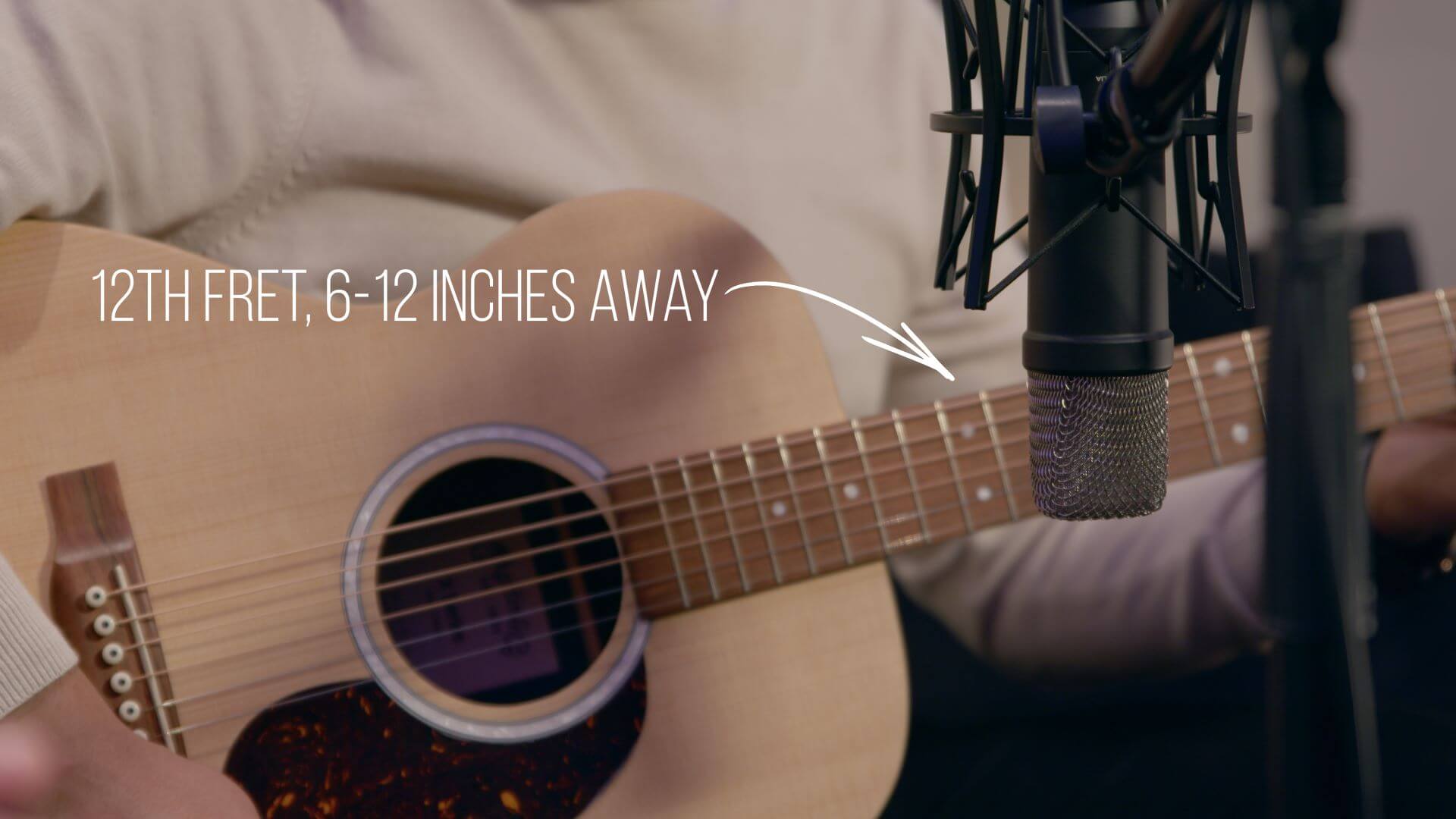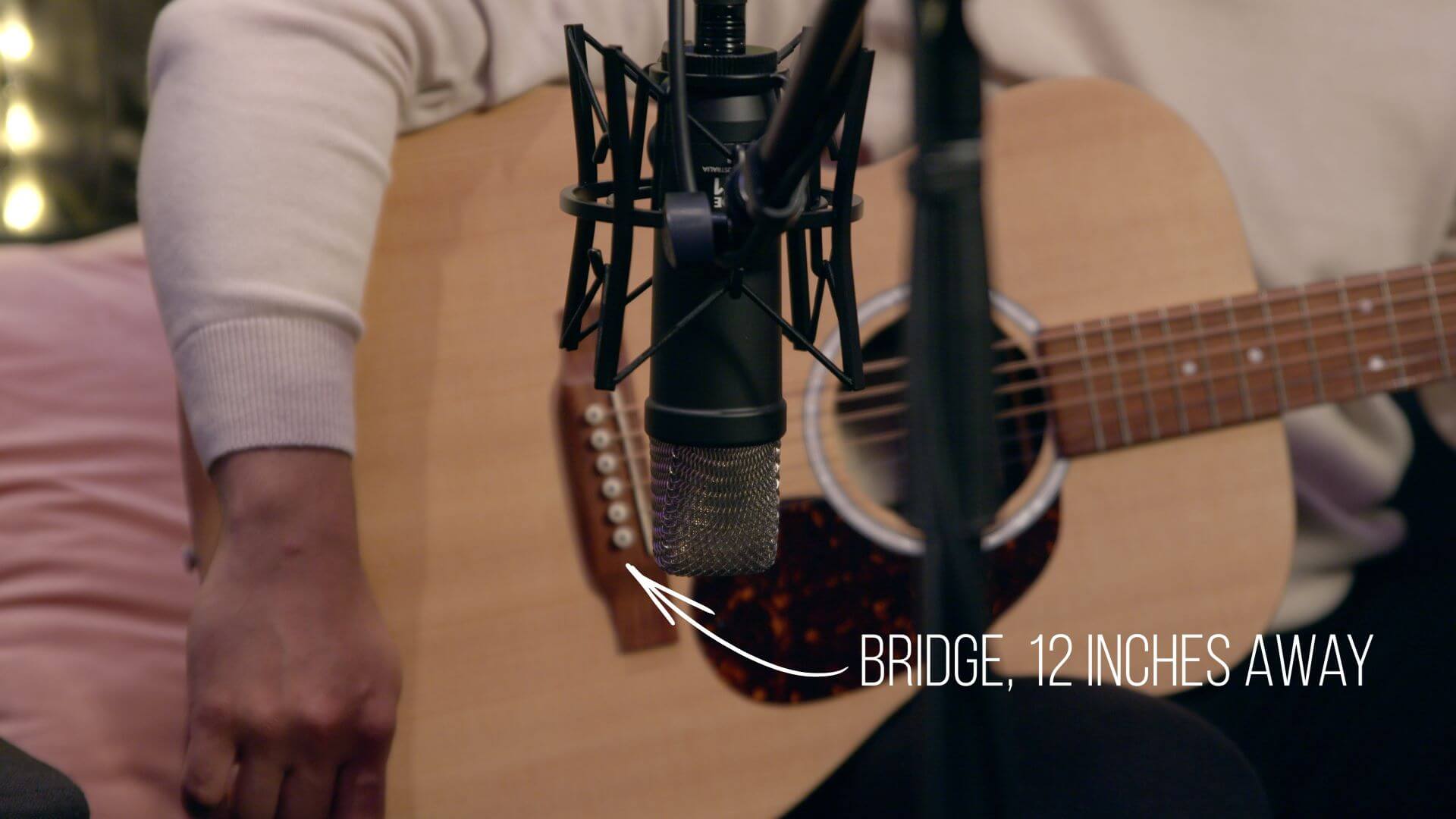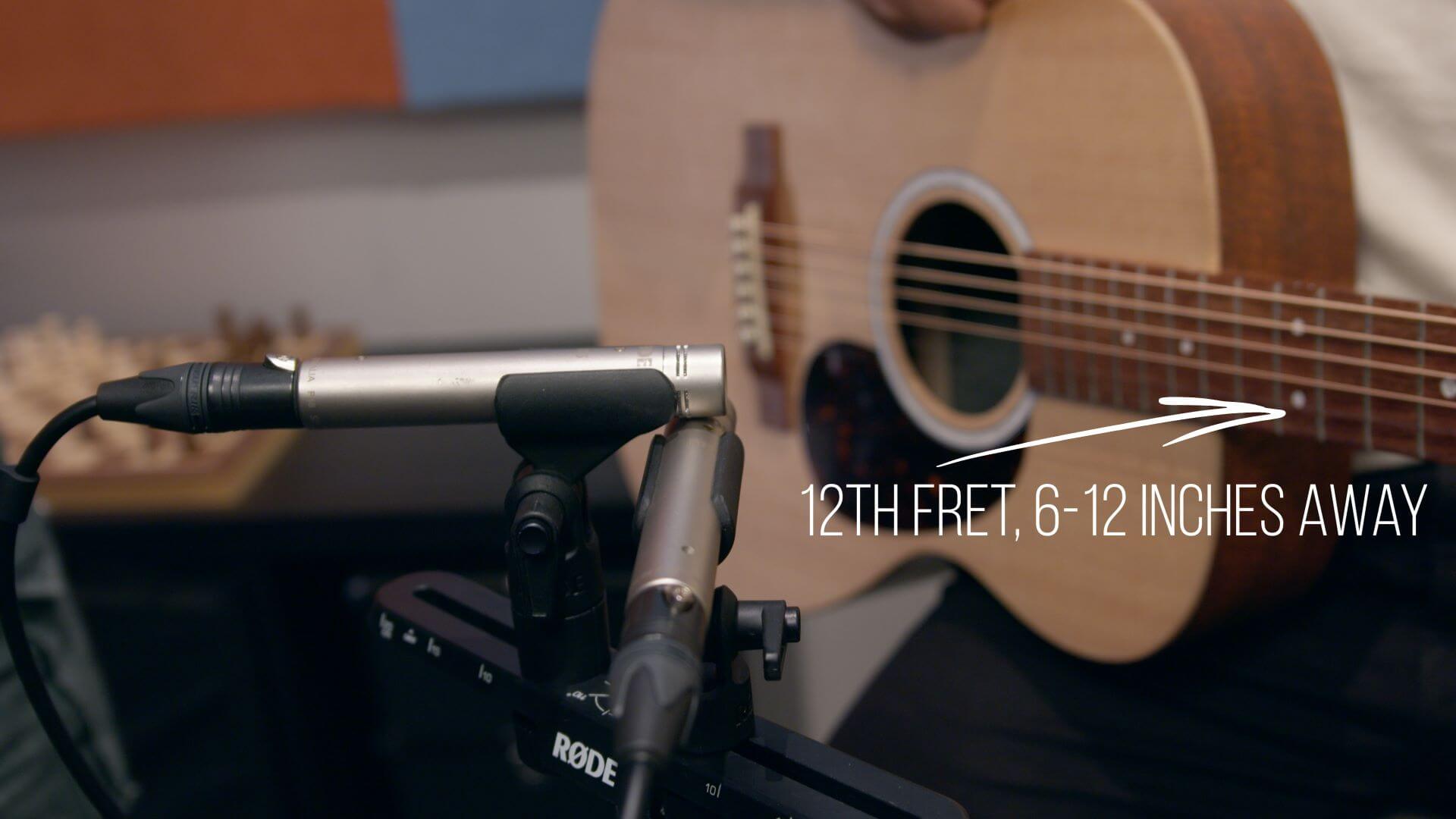It's also perfect for when you want your acoustic guitar to play a more percussive role in your track, as the string noises (especially when using a pick) will stand out more with this technique. For the same reason, it’s great for fingerstyle (or fingerpicking), as the nuance of your picking hand will be more pronounced – move the mic a little closer to the strings when fingerpicking.
Just like the previous technique, you can try different microphone types to get a different character, but a large-diaphragm condenser will pick up all the detail you need, allowing you to equalise and process it to taste once you’ve recorded your performance.
Technique 3: Stereo X/Y Configuration
The last technique we’re looking at requires a little more setup, but it’s absolutely worth adding to your repertoire. The stereo X/Y configuration is a tried-and-true technique for recording wide, full and detailed recordings.
You’ll need two microphones for this, ideally small-diaphragm condensers such as the NT5 (which are available in a Matched Pair), but feel free to experiment by trying out other microphone types – just be sure you have a pair of them.
Because you need to record two microphones at once for this technique, you’ll need an interface such as the RØDECaster Duo that has at least two XLR inputs to record your microphones’ audio into your computer.
When using multiple microphones on a single sound source, it’s important that they are positioned the same distance away from your instrument to avoid phasing issues, which can result in unwanted artifacts in your audio.
You need to position both microphones so that their capsules are aligned with each other, but aimed 90-degrees apart. You can use the Stereo Bar, which is tailormade for this task, or a pair of stands or boom arms to achieve this spacing.
Then, similar to the first technique, position the microphones 6-12 inches from the 12th fret and aim them so that they’re both angled 45-degrees from the fretboard, with one mic pointing up the neck, and the other towards the sound hole.


